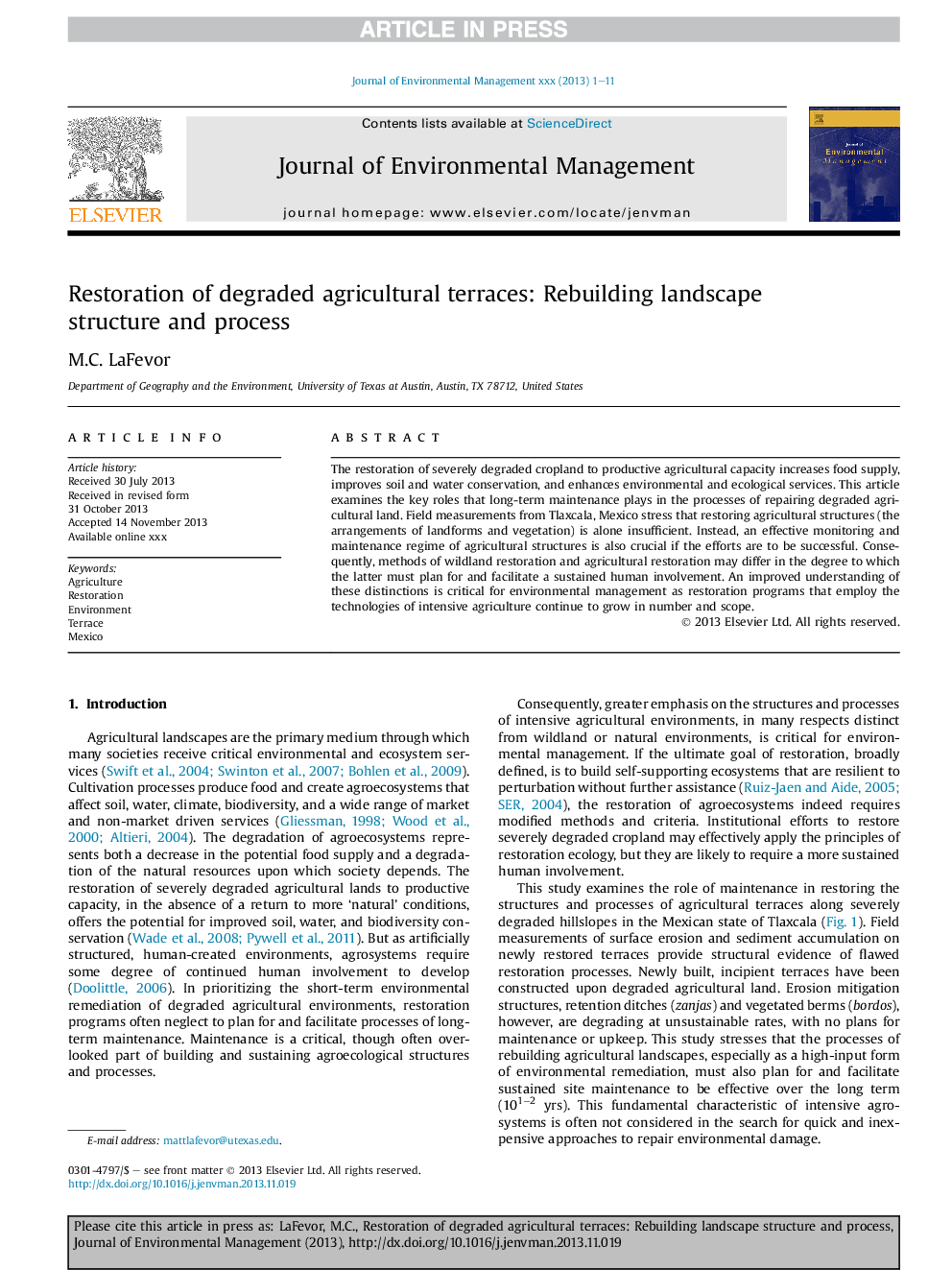| Article ID | Journal | Published Year | Pages | File Type |
|---|---|---|---|---|
| 7483957 | Journal of Environmental Management | 2014 | 11 Pages |
Abstract
The restoration of severely degraded cropland to productive agricultural capacity increases food supply, improves soil and water conservation, and enhances environmental and ecological services. This article examines the key roles that long-term maintenance plays in the processes of repairing degraded agricultural land. Field measurements from Tlaxcala, Mexico stress that restoring agricultural structures (the arrangements of landforms and vegetation) is alone insufficient. Instead, an effective monitoring and maintenance regime of agricultural structures is also crucial if the efforts are to be successful. Consequently, methods of wildland restoration and agricultural restoration may differ in the degree to which the latter must plan for and facilitate a sustained human involvement. An improved understanding of these distinctions is critical for environmental management as restoration programs that employ the technologies of intensive agriculture continue to grow in number and scope.
Related Topics
Physical Sciences and Engineering
Energy
Renewable Energy, Sustainability and the Environment
Authors
M.C. LaFevor,
